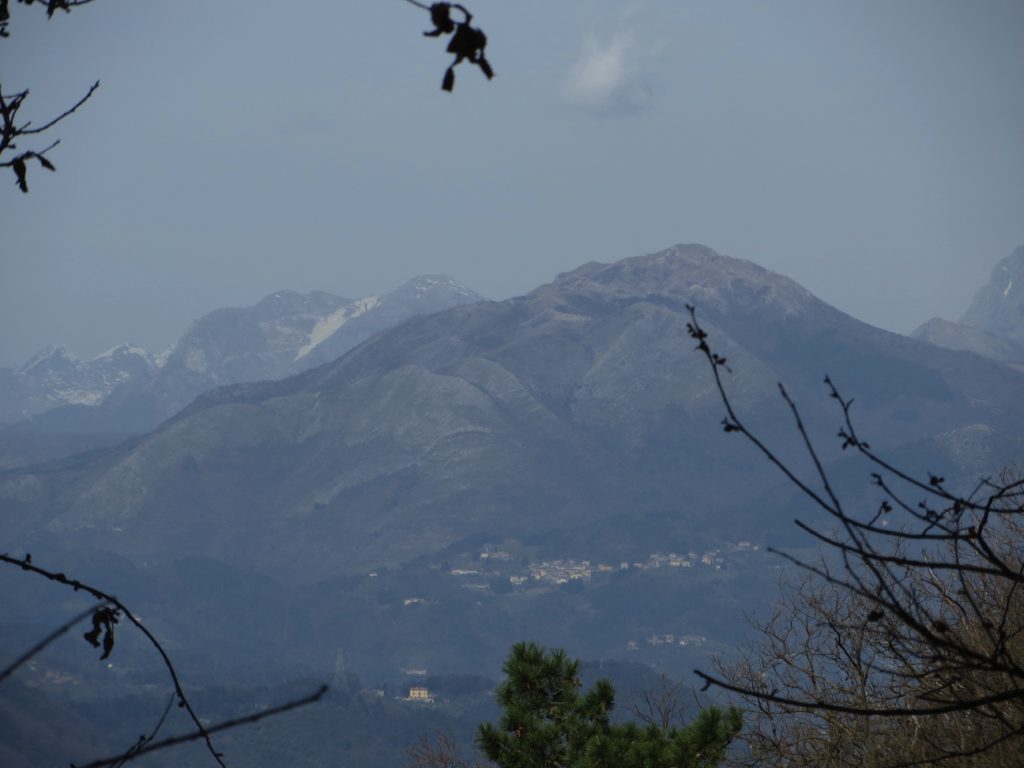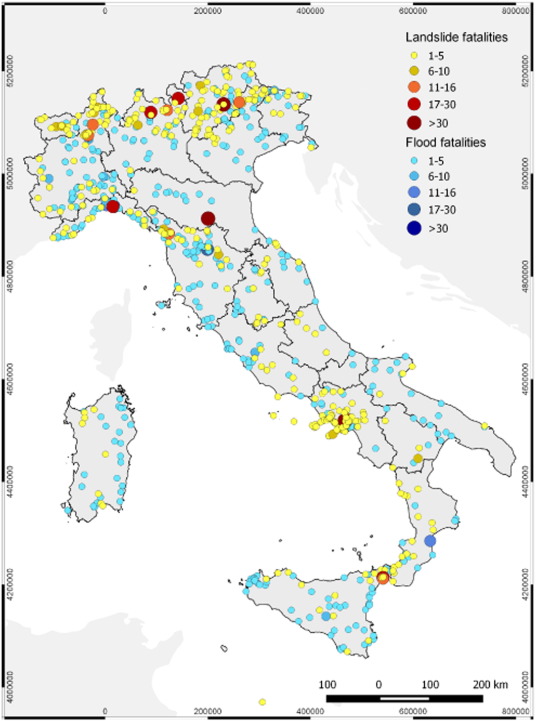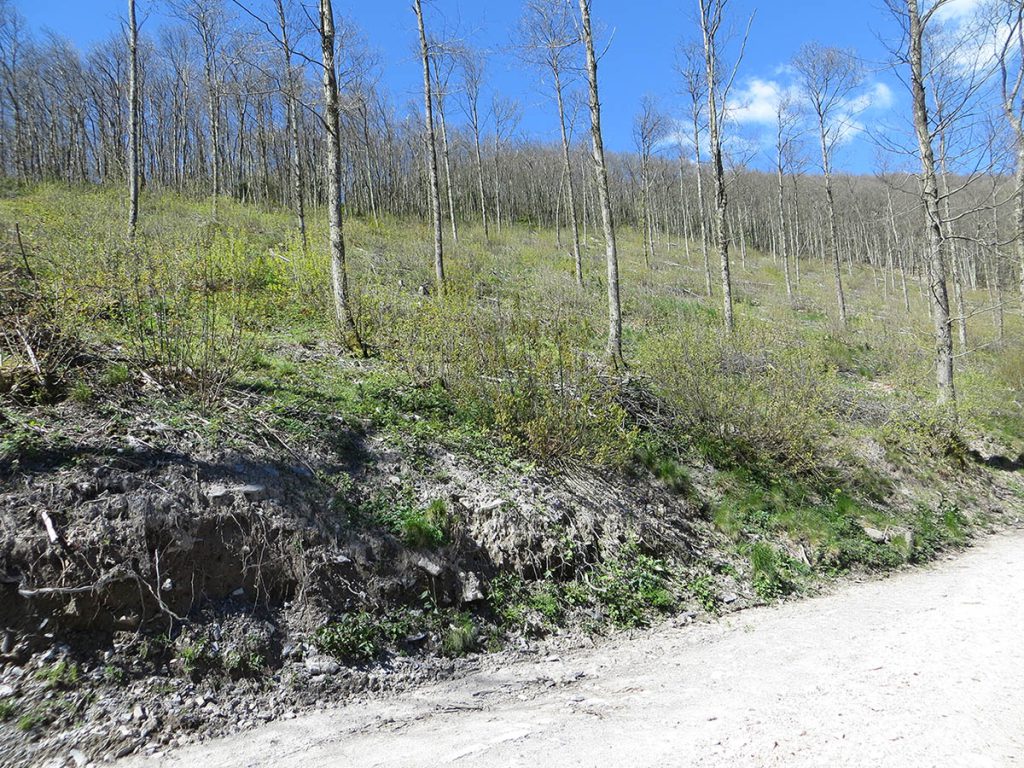Surviving Climate Change in Italy
On a cold, wet afternoon in February 2014, Andrew Mathews stood on a mountain in Tuscany and looked out over the valley below. An environmental anthropologist and a professor at the University of California, Santa Cruz, Mathews had gone there to see chestnut forests that were growing in the Monti Pisani, a mountainous region west of Florence, Italy. The air smelled of rotting leaves, and many of the trees were hundreds of years old.
“It wanted to be spring, but it wasn’t quite there,” Mathews recalled when we spoke, “and the leaves hadn’t really come in on the trees yet. Everything was still pretty bare.”
The chestnuts’ presence told a story of human history: For centuries, peasants in the region had harvested the nuts and cared for the trees. They would cut back branches and trunks, using the wood to heat their homes, and rake up leaf litter from the forest floor. In the early 1900s, chestnuts were a major food source for approximately half a million people in Italy, Mathews said.
But as the region became more urbanized and industrialized over time, diets and lifestyles changed. Eventually, many chestnut forests throughout Italy—including the one Mathews was walking through in 2014—were abandoned.
That afternoon in the Monti Pisani, Mathews was with Massimiliano Giambastiani, an Italian biologist who studies cultivated chestnut varieties, and Alessandra del Chiaro, who runs a farm located farther down the mountain that produces olive oil, wine, and chestnuts. As they looked at the view north of the city of Lucca, Giambastiani recalled a moment in June of 1996.
Gesturing toward a distant mountain, Giambastiani said that he remembered storm clouds forming above it 18 years before. The rains came suddenly, and before long, the earth became unstable. Mud, rocks, and debris slid rapidly down the mountain, overcoming the town of Cardoso below. In some places, the mud was as much as 2 meters deep. Fourteen people died in the event. Many of the areas where landslides took place were abandoned chestnut forests.
The flooding and mudslides that June were notably severe, but they were not an unusual hazard: In Italy, nearly 8 percent of the country is at high or very high risk of landslides. “Quite a few people die in Italy every year from landslides and floods,” Mathews told me—139 people in five years, as an Italian newspaper article noted in 2015—“and those events are only going to increase with climate change.”
Given these conditions, bolstering landscape stability can save people’s lives. As Mathews’ research shows, practices that many people have abandoned—from caring for chestnut forests to clearing riverbeds—may provide clues about how residents can prepare for the storms that are growing increasingly destructive as a result of climate change. “Practically speaking, one of the best things you can do to address climate change in Italy is to address landscape stability,” Mathews said.
Having previously conducted research on Indigenous forest management in Mexico, Mathews’ goal during 16 months in Italy was to learn about the environmental issues that were important to people in the region—and to determine whether or not those issues could help residents “make sense of climate change.”
At first glance, the concerns of tending to trees and maintaining riverbeds may seem far removed from climate change. Indeed, for many of the rural people he spoke with in the region between the industrialized cities of Lucca and Pisa, Mathews found that “climate change is not a very useful concept.” However, “it’s entirely normal and reasonable that people should deal with climate through the environmental phenomena they care about,” he said. And in a region where mudslides and floods are not uncommon, people—from farmers to loggers to scientists—expressed their concern with restoring landscape stability.
They had a very specific vision of what this meant. For people in the region, a stable landscape looks “highly gardened,” Mathews explained. Peasant practices of tending to the environment—including raking leaves in the forests and clearing the areas near rivers—made the landscape look cared for and clean. Mathews, who spent part of his childhood in Italy in the 1970s and ’80s, remembers some of these practices. “When I was a kid, after a rainstorm, people were out there,” he recalled, clearing ditches of sediment so the water could run smoothly.
In people’s view of a stable landscape, vegetation would be cleared alongside rivers, Mathews explained, to prevent dead wood from blocking the waterways and contributing to floods. Most residents believe that riverbeds should be broad and clean, he said. After that day on the mountain with Giambastiani and del Chiaro, for example, Mathews found an Italian newspaper article that was published in the months after the 1996 mudslides. “But Why Haven’t They Cleaned Out the Bed of the River?” the headline asked—and the article expressed concern that without doing so, more floods could occur. The language, Mathews said, “is of lack of care and lack of cleaning.”
In a stable landscape, hillsides would also be tended to, and trees would be cut back. When they grow too tall, Mathews explained, winds can topple the trees, which can take the hillsides with them. Furthermore, the peasant system of cutting back trees periodically and allowing them to re-sprout from the stumps, called coppicing, helped keep the soils in place, he said, because the tree roots remained in the ground. When these practices are abandoned, the ground can become less stable as a result.
As climate change wreaks havoc throughout the world, there are different kinds of knowledge about what can keep landscapes—and people—safe. In places where communities have lived for millennia, local understandings about how to care for the land may differ from scientific perspectives. In contrast with the belief that environments—like parks and protected areas—are better off when people leave, for example, in Italy Mathews found that the opposite could hold true: People were concerned that leaving the land might cause it harm.
In the Monti Pisani, “there’s this sense that the landscape has been abandoned by its peasants,” Mathews said. In response, people are looking to the government to fund projects to help restore landscape stability. One such program in Italy, called Custode del Territorio (Guardian of the Territory), pays farmers to remove debris from streams in the area, Mathews said. Through these kinds of initiatives, people can care for local environments, if in different ways.
During an interview he conducted in 2014, a firewood producer told Mathews that “this is a landscape that has been transformed by human beings, and it needs human beings to keep it safe.” It was “as blunt as that,” Mathews said. “Literally, this is not a landscape that you can abandon, because if you do, it will come back and bite you.”



































